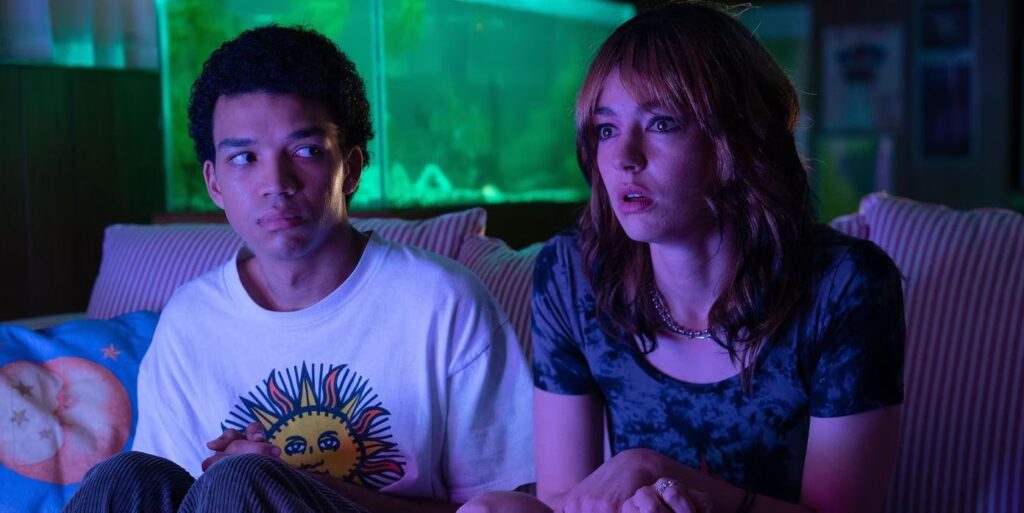I Saw the TV Glow: Long Live the Screen

The line that best encapsulates the knotty themes of I Saw the TV Glow isn’t spoken aloud; instead, it’s scrawled across the screen in pink font: “Isabel and Tara are like family to me.” The author of that statement is Maddy (Brigette Lundy-Paine), and the young women she’s referring to aren’t real people (or are they??) but the central characters in The Pink Opaque, her favorite episodic thriller. The notion that Maddy can cherish fictional figures akin to her actual relatives might strike you as ridiculous. For my part, I’ll cop to identifying with her sentiment in a peculiar way, given that 13 years ago on this very website, I celebrated Buffy the Vampire Slayer for its capacity to “make you feel as if you belong” and described watching an episode as the equivalent of “going home.” In other words, I get where she’s coming from.
Buffy, as it happens, is an obvious point of inspiration for The Pink Opaque, with its paranormal investigators, its monster-of-the-week structure, and its claim to a teenage audience in the ’90s (it airs on the “Young Adult Network”). But Jane Schoenbrun, I Saw the TV Glow’s writer and director, is after something more complicated than paying tribute to a childhood staple, even if they toss in a few tasty easter eggs. (One member of Buffy’s beloved Scooby Gang was named Tara; Amber Benson, the actress who played her, cameos here.) They’re more concerned with our relationship with the art that we consume—how it can shape us, bind us, even warp us. In High Fidelity, John Cusack surmised that shared interests are essential when connecting with friends and lovers: “What really matters is what you like, not what you are like.” But what if what you like alters who you are? Read More
